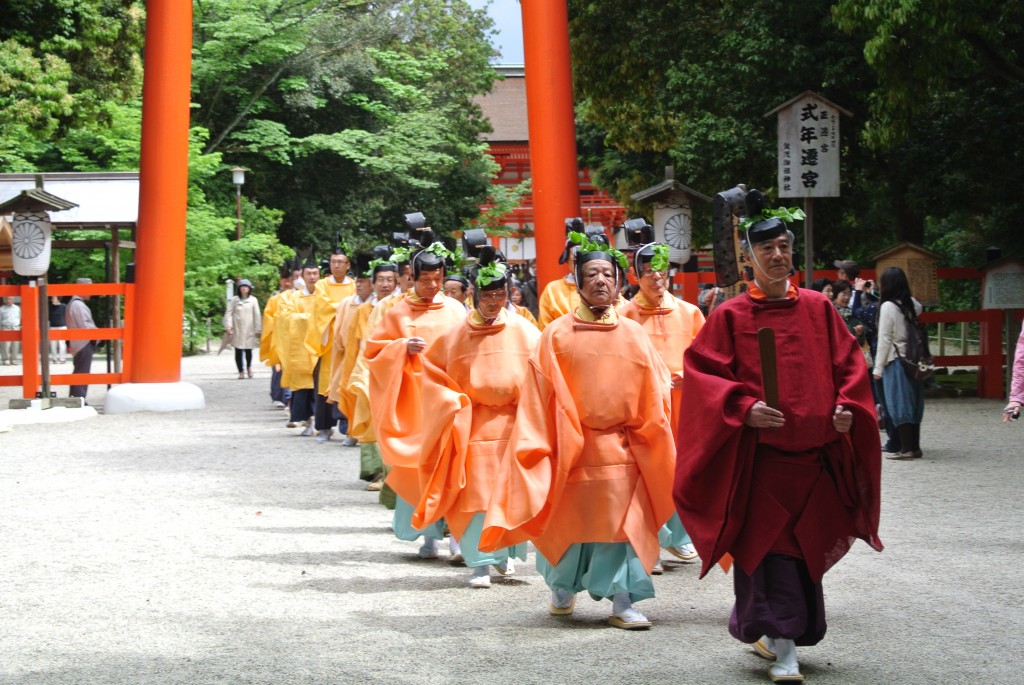
About half an hour ago, a large procession set off from Shimogamo Shrine here in Kyoto to head for Mikage Shrine, up in the hills near Yase. It’s one of several pre-events for the Aoi Matsuri, Kyoto’s oldest festival.
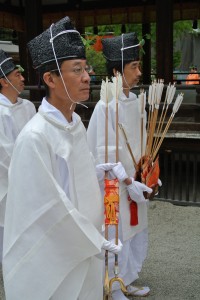
The Aoi Festival takes its name from the aoi leaf (a kind of hollyhock), which decorates the heads of those in the procession. Remarkably, the event is thought to date back to the sixth century, when disastrous rains ruined crops and led to the appeasement of the kami with processions and horse events. Participants decorated themselves with the aoi leaves, which were thought to protect against disease.
In the Mikage Festival, held three days before the main Aoi Festival, a procession sets off from Shimogamo Shrine to collect the kami’s aramitama (rough spirit). The aramitama is the aspect of the kami which causes destruction or natural disasters. The nigimitama on the other hand is the peaceful or calming condition of the kami. (Spirits which appear as a aramitama can be tranformed into a nigimitama by pacificatiion and worship.)
In Shimogamo’s case the nigimitama resides in the main shrine, and the aramitama at Mikage Shrine on the outskirts of Kyoto. Once a year the two aspects are brought together in the run-up to the Aoi Festival. The coming together creates a power surge, in preparation for the main event on the 15th. One way of seeing this is in the bringing of the ‘rough aspect’ down from the wilds and into the secular world. Another way is in the merging of two elemental forces, as in the joining of yin and yang principles.
Before heading off to Mikage Festival, participants undergo ritual purification. In years past they would have walked for a couple of hours to get to Mikage Shrine, but these days it is all done by coach and truck. Even the kami hitches a ride down from the hills.
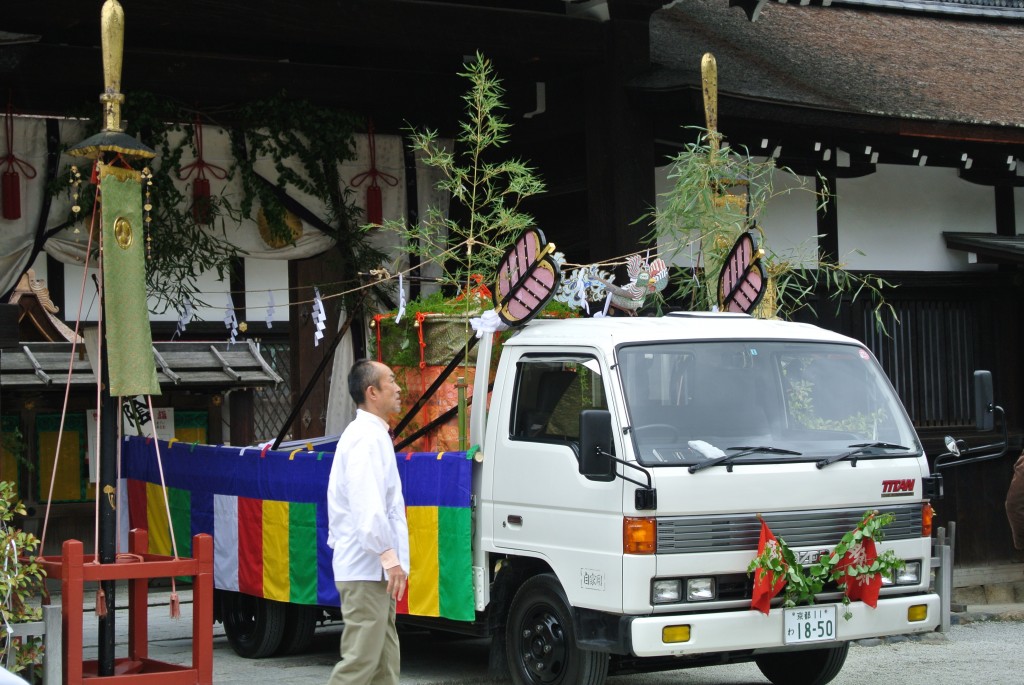
Sacred truck for a sacred ride
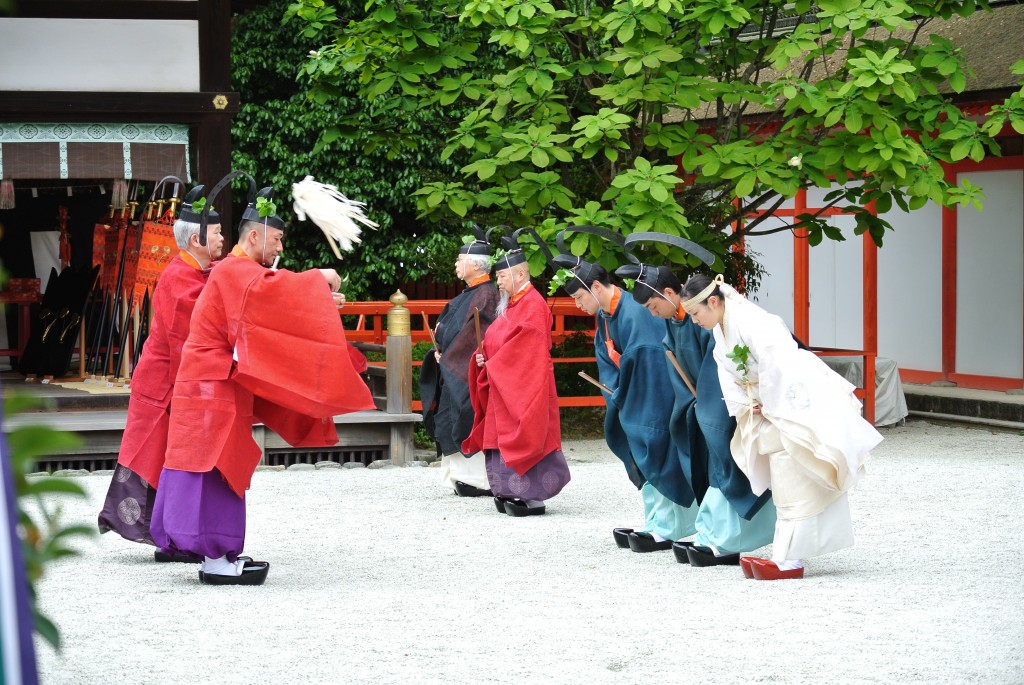
Purification of participating priests: notice the priest in red nearest the camera who is scattering what appeared to be confettil but must have been some kind of purifying substance (not rice or salt)
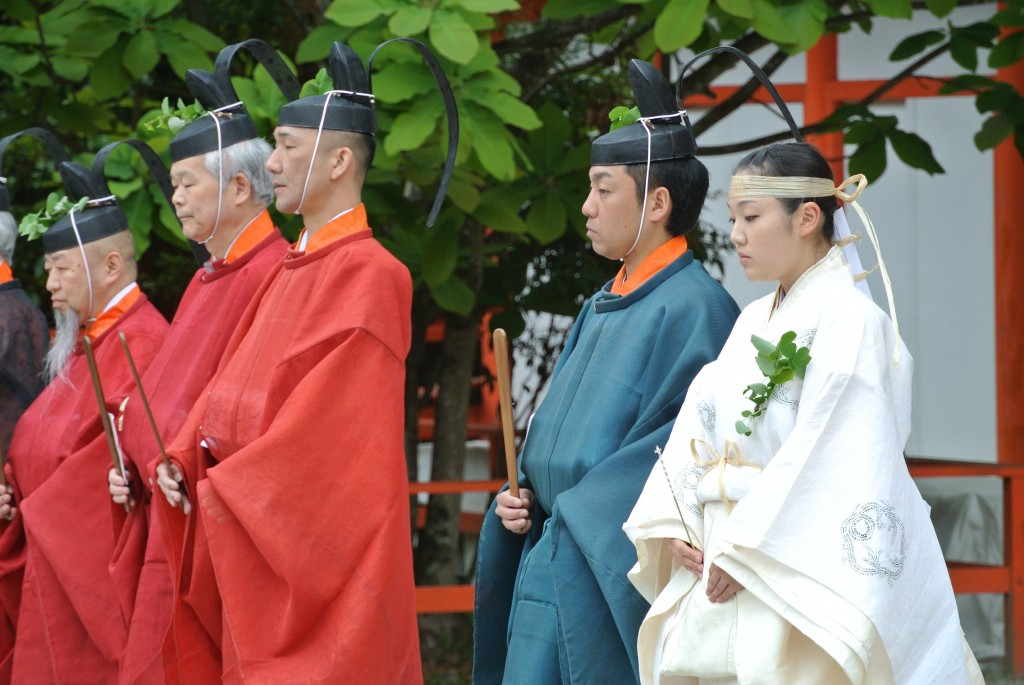
Interesting sartorial differences for male priest and female
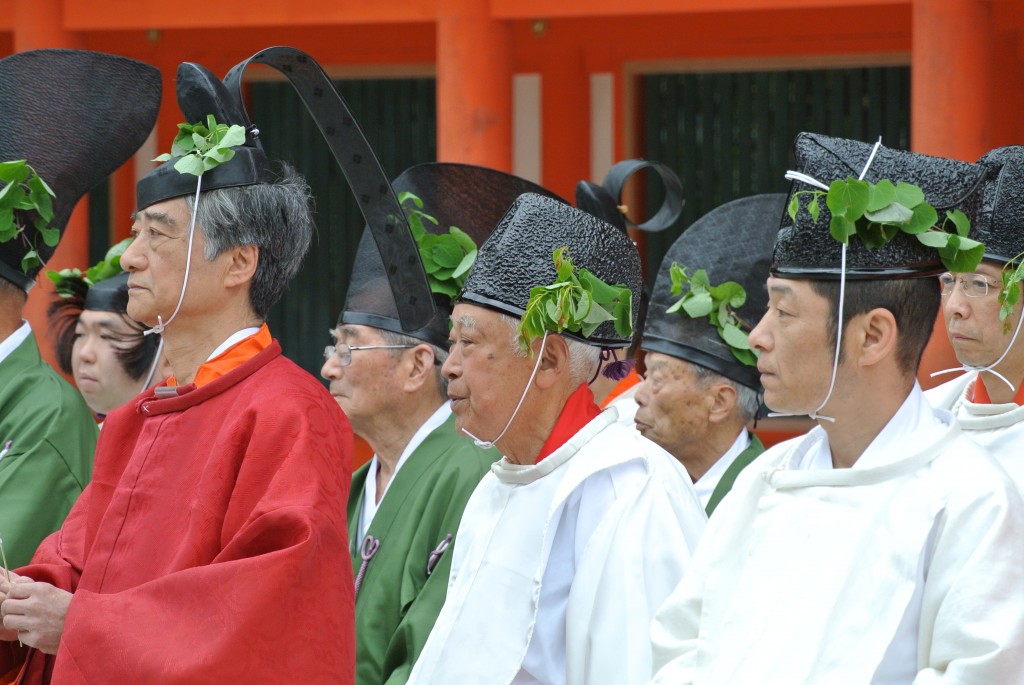
Aoi leaves on the processional participants
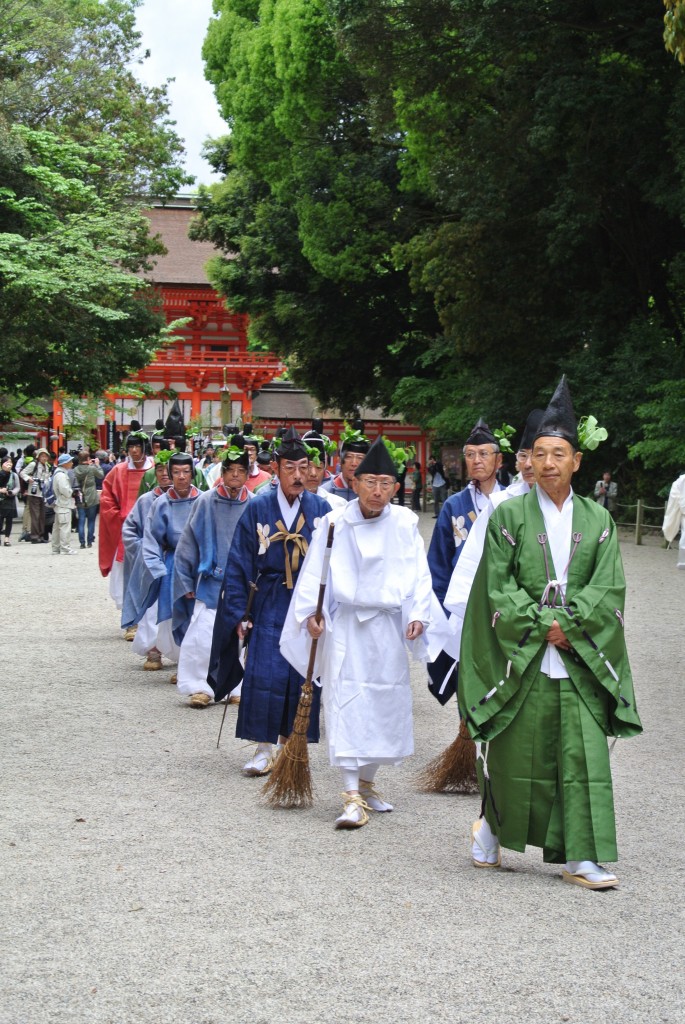
Heading away to Mikage Shrine with a variety of purification tools - behind the brushes are long metal sticks used in the past to stave off evil spirits, now dragged along the gravel

Splendid photos and a nice short summary of the significance of the event. If I may be so bold, I think your wonderful photos could be better served with more detailed captions. For instance, the participants are wearing very very colorful robes — do these colors have a specific meaning? And also, it is my understanding that HOLLYHOCK is not indigenous to Japan, but rather came from Siberia or Russia…….if that is the case, the use of these plant/flowers provides more direct proof of continental influences in early early Japan. In any case, BRAVO.
Hi Mark… perceptive comments as always. Funnily enough, Shinto scholar John Breen was also at the event and I asked him about the significance of the colours. He didn’t know either, though he noted that the guji was in black and the gon-guji in red. How the other colours were apportioned I have no idea, but I suspect different work-groups in the ujiko were given different colours. I’ll try and find out when I next go to the shrine….
As for the aoi (hollyhock), I hadn’t heard about it being an import from Siberia but that’s very intriguing if it’s true. I once asked a Kamigamo priest about the origins of the Kamo clan (founders of Shimogamo as well), since there are rumours that they were immigrants, but he said he didn’t know anything about foreign origins… Nonetheless, a crow-dancing ritual at Kamigamo and a secret shamanic rite every year on this very day (May 12) certainly suggest to me at least Siberian connections …
By the way, John Nelson wrote a fascinating article about the fertility connotations of the aoi plant. Well worth a read, though there’s nothing about Siberia… ‘Of Flowers and Phalli: Sexual Symbolism at Kamigamo Shrine’ in the journal Japanese Religions.
Taisaku Nogi has written in with this surprising revelation: “The leaves decorating priests and participants are actually Katsura. Traditionally they should be Aoi leaves with Katsura whips, but probably Aoi is rare now. The leaves look similar: http://www.geocities.jp/greensv88/jumoku-zz-katura.htm ”
However, I could be wrong. I found a picture in my camera with 2 Aoi leaves bundled to a Katsura branch having a number of Katsura leaves. This seems a traditional style of Aoi-Katsura. I don’t know if the priests and participants use the same ones, though.”